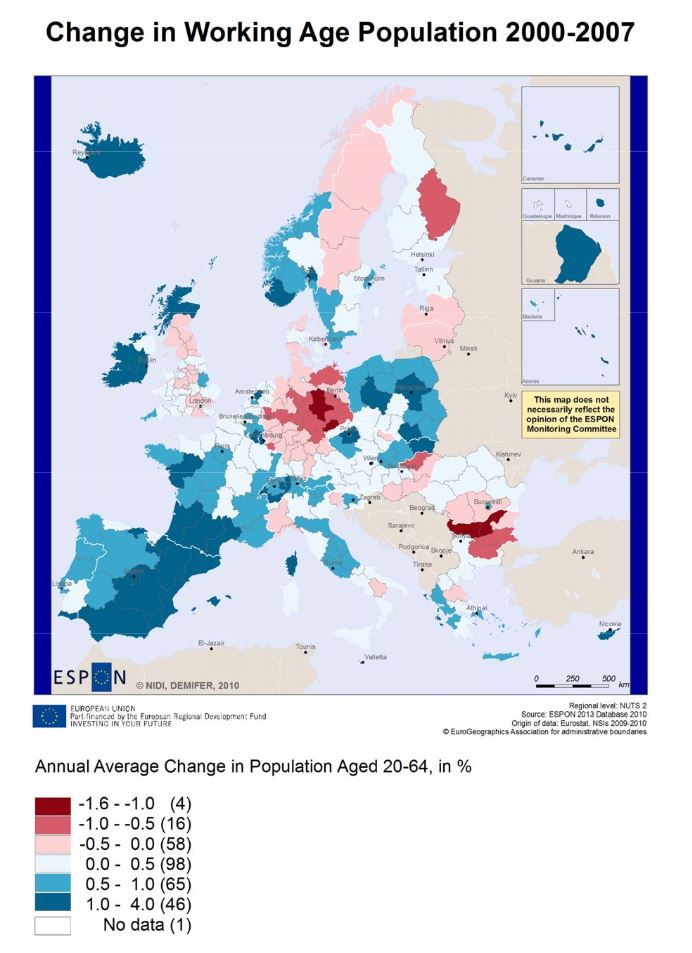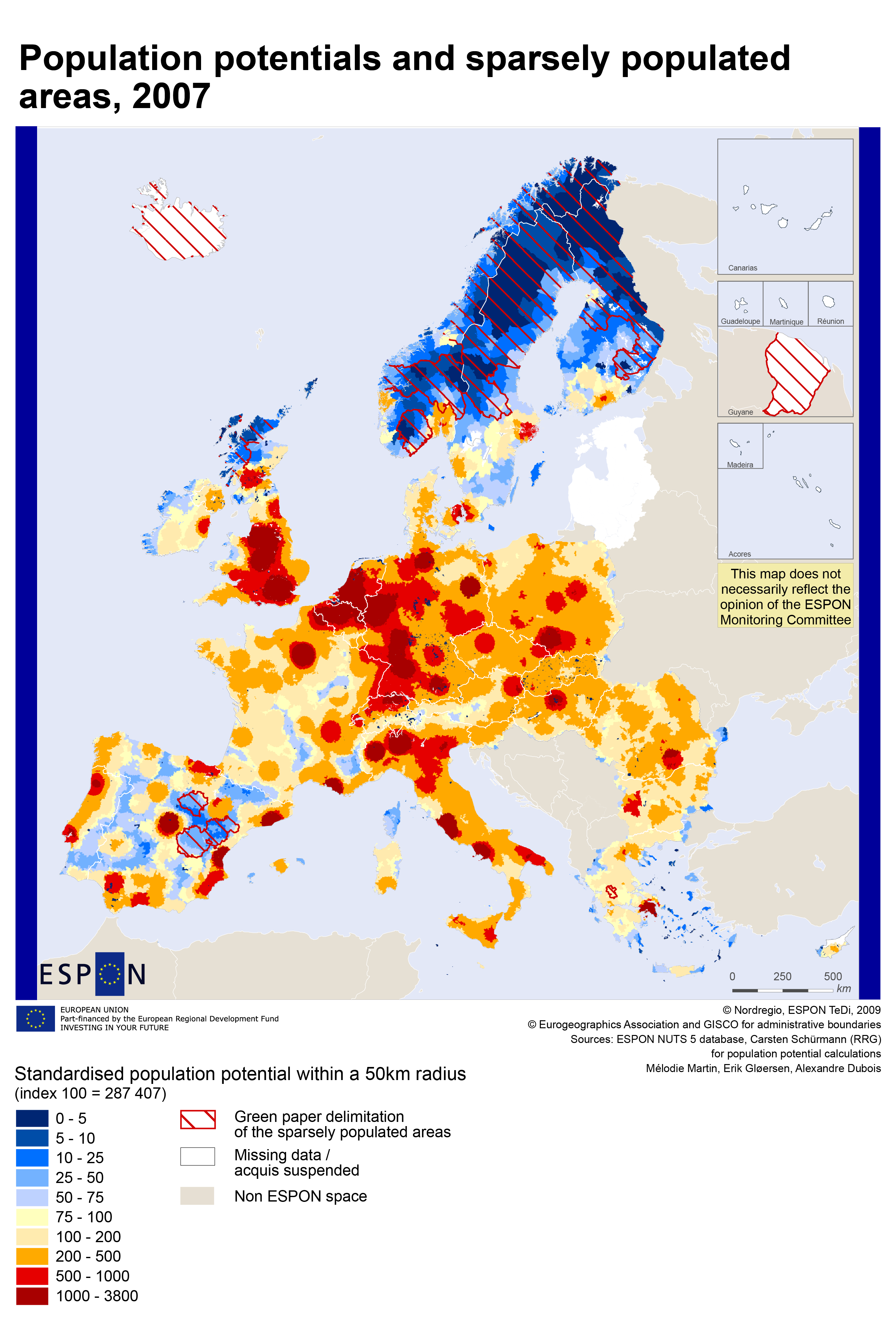The most obvious benefits of the current ESPON programme include:
- A stronger research network for territorial and regional development.
- New knowledge and evidence for regional policy development, strategic programming and planning.
- Better regional data comparability and benchmarking possibilities at a European scale.
For Swedish stakeholders, the ESPON Programme has made it possible to compare development at the regional level with other parts of Europe. A current example is the analysis in the Partnership Agreement for the European Structural and Investment Funds. The programme has also served to foster a discussion of regional policy development at both national and regional levels.
An active research network
Institutions in Sweden have been involved in many of the winning applications in the ESPON 2013 Programme. In particular, Nordregio has been successful in both the lead and project partner roles in several projects. However, institutions such as the Royal Institute of Technology (KTH), Jönköping International Business School and the University of Umeå have also been active in different projects. Growth Analysis (the Swedish agency for growth policy analysis) and KTH hosted the Swedish ESPON Contact Point (ECP) and also formed the Swedish ESPON Network. The network provides members and others with information about the programme and promotes engagement in research projects and the use of results. Members of the Swedish ESPON network meet four times a year in Stockholm. The network is open to anyone who wants to discuss or promote information relevant to territorial development.
Information that is directed towards practitioners has been high on the ECP agenda. Actors working with both EU and national regional development programmes - from analyses and writing operational programmes to implementation and monitoring - have been able to utilize brief and accessible information about what is happening within ESPON. This is managed by a special website that serves as a link between researchers and practitioners, and seminars and emails are also frequently used for communication. The ESPON Programme has led to a stronger and more policy-relevant Swedish research network for evidence-based regional and territorial studies.
Applied research for policy development
The main part of the ESPON 2013 Programme is devoted to applied research to develop knowledge about European territorial structures, trends, perspectives and policy impacts. For Sweden, some of the projects stand out because of the specific territorial structures and challenges involved.
One of these projects is DEMIFER (Demographic and Migratory Flows Affecting European Regions and Cities), which is notable because demographic challenges are particularly strong in many Swedish regions. The analysis shows that Sweden has a decreasing working-age population in large parts of the country, which can lead to labour shortages in both the private and public sectors. This knowledge, benchmarking with European regions, and other ESPON findings about territorial structures and typologies have led to fruitful policy discussions about demographic challenges, especially in Sweden's sparsely populated areas.

Another interesting project from a Swedish perspective is KIT (Knowledge, Innovation, Territory), which concluded that R&D and formal knowledge in general do not necessarily lead to innovation, and furthermore, innovation does not necessarily lead to regional growth. These linkages are strongly mediated by local territorial assets. A regional "critical mass" is needed, such as the presence of research-intensive universities or companies, if innovation activities are to generate growth in the GDP. Interesting policy discussions have followed from this project as well, including whether it is feasible for every region to meet the Europe 2020 target of having at least three per cent of GDP devoted to R&D investments.
Targeted analyses based on user demand
The current ESPON Programme includes new possibilities for getting researchers closer to the potential users of the knowledge. Targeted Analysis Projects are thematically defined by the demands of policymakers. In these projects, it is possible to focus more on certain parts of Europe or specific types of regions or cities, as long as the knowledge is relevant for the rest of Europe. Another added value is that the users are involved with the researchers in the analysis process, which facilitates their ability to learn from the work.
One of these projects is RISE (Region Integrated Strategies in Europe), in which the Västerbotten Region is one of the stakeholders. Using Västerbotten and three other pilot cases, this project developed a typology of regional integrative strategies based on "Governance consolidation" and "Policy consolidation". When these different dimensions are combined, there appears to be greater stability and regional institutional consolidation (as in Västerbotten), and greater cross-sectoral alignment of policy has been possible at the regional level and possibly greater cross-territory alignment within sectors. The project also developed a "ladder of integration" and "toolkit" to help regional actors develop more integrated strategies.
Another interesting Targeted Analysis Project is TeDi – Territorial Diversity in Europe, which is intended to improve our understanding of development processes in territories outside the Pentagon (delimited by the cities of Hamburg, London, Paris, Milan and Munich). Such territories are defined as insular, mountainous, sparsely populated or peripheral, and the project has produced a number of interesting maps showing these territorial specificities.

Data and maps for regional benchmarking
Another priority of the ESPON Programme is the Scientific Platform, which includes the development of the ESPON 2013 Database, Territorial Indicators and Indices, and a Territorial Monitoring and Reporting System. In particular, maps are one of the best-known features of ESPON. The ESPON ATLAS (Territorial Dimensions of the Europe 2020 Strategy) has been valuable in this respect, as it has made it possible to benchmark Swedish regions for the Europe 2020 targets.
The BSR-TeMo (Territorial Monitoring for the Baltic Sea Region) is also of special interest for Sweden and the other Baltic Sea countries. The aim of the project is to illustrate and encourage understanding of territorial structures and trends at different scales and for different types of regions across the BSR. It should also provide evidence of the region's diversity and document progress in addressing the main territorial challenges of the BSR: the east–west divide, the north–south divide and the urban–rural divide. The project will develop an indicator-based monitoring system, complemented by some qualitative information. It allows for continuous monitoring and benchmarking of territorial development of the BSR at the European level, in relation to other macro regions, and internally at regional and local scales.
The project is scheduled to be finalized in February 2014 and a very concrete result will be the "TeMo Presentation Tool", which will act as the standard gateway for users to access the territorial monitoring system. It will be implemented as a simple and easy-to-use local browser application. The tool will give users access to indicators, maps, data files and case studies to facilitate monitoring and benchmarking.
Requests for the future
Regional policy development and strategic interventions are complex and must build on a sound evidence base. Cross-sectoral and cross-border perspectives are becoming increasingly important. This is especially evident in an export-oriented country such as Sweden. Stakeholders at both national and regional levels need comparable indicators and high-quality analyses that are easily accessible via reports, policy briefs, maps and monitoring systems.
Even though the current ESPON Programme has high ambitions concerning usability and policy relevance, there is still much to do in this regard. For the coming ESPON 2020 programme, we must do a better job of making sure that practitioners and policymakers can use the available ESPON knowledge. More communication activities are needed in which researchers and potential users meet and discuss analysis results that are relevant to each stakeholder. Upgrading targeted analyses in which researchers and stakeholders cooperate during the whole project is also on the wish list.
The ESPON 2020 Programme also needs to be more policy relevant and closely connected to processes taking place within the EU, the member states and their regions. Including more assessments and policy recommendations in the reports could be one way to achieve this goal. Finally, another important prerequisite is a faster timeline from project conception to final results.
Back to Nordregio News Issue 4, 2013